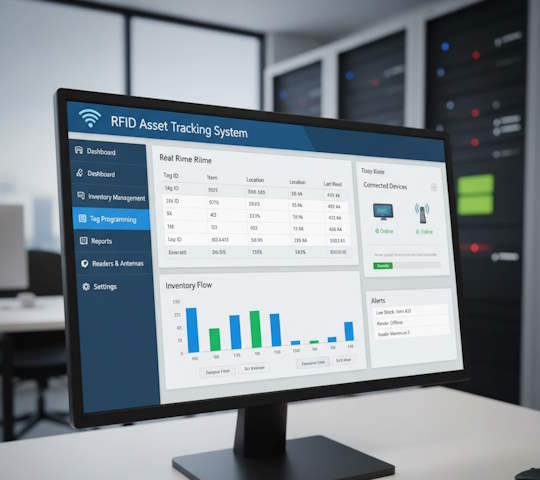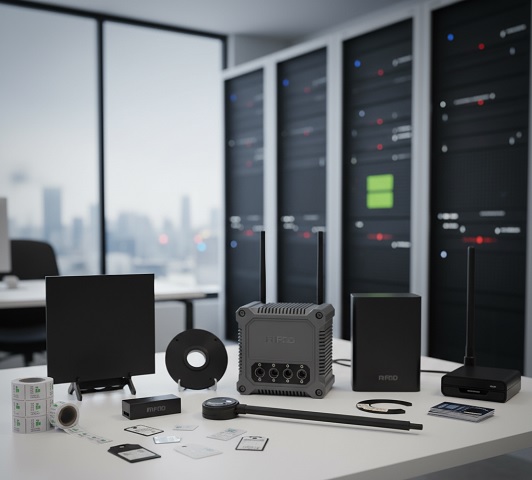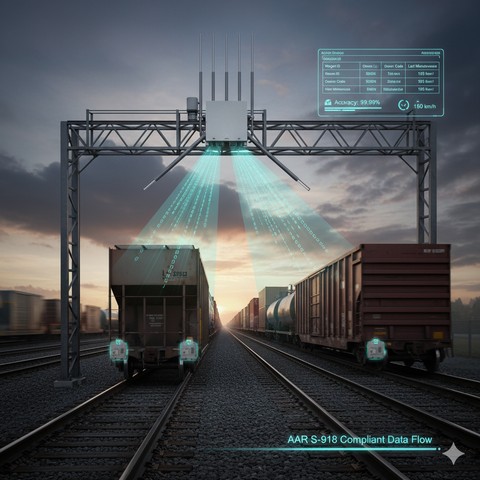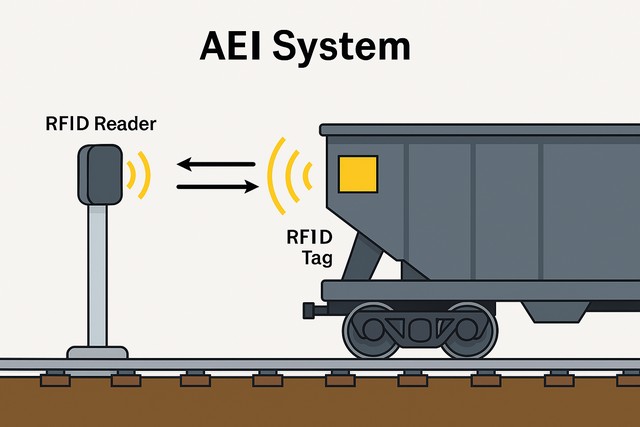RFID in Railways: From Wagon Identification to Smart Transport Infrastructure
Introduction
Railway transport, often called the backbone of the global economy, demands unprecedented levels of reliability, transparency, and asset management efficiency. Traditional wagon tracking systems based on visual number reading and paperwork have become a bottleneck in an era of increasing freight flows.
Radio Frequency Identification (RFID) has emerged as the industry standard for automatic identification and data collection, providing the digital foundation for the “smart railway”. According to the Association of American Railroads (AAR), the implementation of Automatic Equipment Identification (AEI) systems can improve operational efficiency and cut maintenance costs by 10–15%.
This article explores how large-scale RFID deployment allows railway operators to shift from episodic record-keeping to real-time, continuous monitoring and control of thousands of assets.
Technological Standards: The Basis of Global Interoperability
A critical factor in RFID implementation is adherence to international standards that ensure system interoperability across countries and operators.
Evolution of Identification Systems in Railways
| Criterion | RFID (AAR S-918) | Video Recognition | Manual Logging |
|---|---|---|---|
| Identification accuracy | >99.9% (all-weather) | 90–95% (weather-dependent) | <90% (human errors) |
| Reading speed | Up to 200 km/h | Requires slowdown | Stationary only |
| Additional data | Yes (maintenance info, owner codes) | No | No |
| Ownership cost | Medium (low OPEX) | High (software-intensive) | Very high (labor) |
| Extreme conditions | Excellent (-40°C to +85°C) | Limited | Problematic |
The de facto global standard is AAR S-918² for Automatic Equipment Identification (AEI). It defines:
-
Passive UHF RFID tags (860–960 MHz)
-
Data exchange protocols between readers and central systems
-
Installation and maintenance guidelines
-
Data coding rules for international exchange
This standard is harmonized with European TSI (Technical Specifications for Interoperability)³ and supported by the International Union of Railways (UIC).
Key Applications and System Architecture
1. Automatic Equipment Identification (AEI)
Fixed readers installed at station entries, hump yards, and border crossings automatically capture tag data when wagons pass by.
Equipment:
-
Readers: Industrial-grade UHF RFID readers (Impinj Speedway, Zebra FX9600)
-
Antennas: Railway antennas with up to 8 m range
-
Tags: Rugged passive UHF tags resistant to shocks and vibration
Captured data includes:
-
Wagon number (10-digit code)
-
Owner code
-
Wagon type and model
-
Last inspection date
2. Technical Condition & Safety Monitoring
-
Smart wagons: RFID tags on critical nodes (axle boxes, wheels, braking systems) integrated with IoT sensors.
-
Cargo integrity: RFID-based electronic seals (e-seals) prevent tampering and unauthorized opening.
3. Maintenance, Repair, and Overhaul (MRO)
When wagons enter depots, RFID automatically provides the full maintenance history to staff, accelerating inspection and repair planning.
Financial and Operational Impact
Measured results of RFID adoption in railways:
-
15–25% increase in yard throughput due to process automation.
-
10–15% lower operating costs thanks to reduced labor, fewer idle wagons, and error prevention.
-
99.9% location accuracy, essential for logistics planning.
Global Case Studies
Norfolk Southern Corporation (USA)
-
Scale: 22,000 miles of track covered by RFID readers
-
Fleet: 120,000+ wagons tracked
-
Results: 20% faster train assembly, 85% fewer lost wagons
Canadian Pacific Railway
-
Technology: AEI integrated with machine vision
-
Impact: 30% faster inspection, ROI achieved in 18 months
-
Predictive maintenance: 25% fewer unscheduled repairs
European Rail Traffic Management System (ERTMS)
-
Standardization: Common protocols for 28 EU countries
-
Interoperability: Seamless cross-border freight operations
-
Safety: Automated compliance checks
Future Trends
-
Industrial IoT & Digital Twins: Virtual wagon models fed with RFID and sensor data.
-
Predictive Maintenance: AI-driven component failure forecasts.
-
Blockchain: Secure logging of wagon transfers, customs, and cargo status.
-
Edge Computing & AI: On-site anomaly detection and route optimization.
Conclusion
Implementing RFID in railways is a strategic step towards smart transport infrastructure. Adherence to standards such as AAR S-918 and TSI ensures global scalability.
Proven benefits include higher efficiency, lower costs, and improved safety, while future integrations with IoT, blockchain, and AI promise even greater value. RFID is not just about wagon tracking — it is the foundation of the next-generation railway ecosystem.
FAQ
Q1. How much does an RFID system cost for railways?
CapEx typically ranges from $200,000–500,000 per hub, with ROI in 18–30 months.
Q2. How does RFID work at high speeds?
Modern systems read tags at up to 200 km/h with >99.5% accuracy.
Q3. Are RFID systems globally compatible?
Yes, through standards AAR S-918 (North America) and TSI (Europe). Frequency differences are bridged via gateway systems.
Q4. What is the service life of railway RFID tags?
10–15 years, with >100,000 read/write cycles.
Q5. How does RFID improve safety?
By monitoring wagon condition, preventing uninspected rolling stock, and enabling integration with ETCS/PTC train control systems.
Sources
- Association of American Railroads. "Automatic Equipment Identification Systems: Performance Analysis". 2023. https://www.aar.org/wp-content/uploads/2023/02/AEI-Performance-Report.pdf
- AAR Standard S-918. "Automatic Equipment Identification Tagging". 2020. https://www.aar.org/standards/
- European Union Agency for Railways. "Technical Specifications for Interoperability (TSI)". https://www.era.europa.eu/activities/technical-specifications-interoperability_en
- Norfolk Southern Corporation. "Annual Report 2023: Digital Innovation in Rail Operations". https://www.nscorp.com/content/nscorp/en/investors/annual-reports.html
- Canadian Pacific Railway. "Technology Implementation Report". 2023. https://www.cpr.ca/en/investors
- European Rail Traffic Management System. "ERTMS Deployment Report". 2023. https://www.ertms.net/






